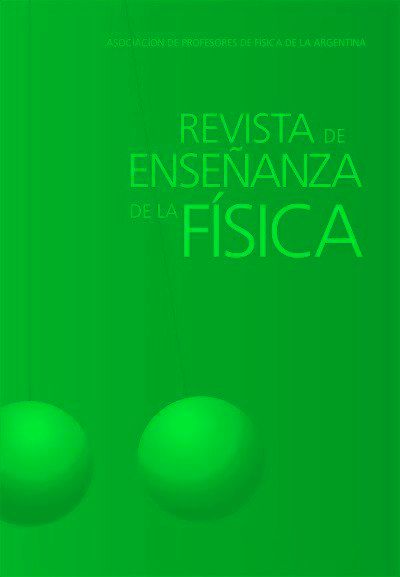Teaching astronomy in sign languages
DOI:
https://doi.org/10.55767/2451.6007.v33.n2.35205Keywords:
Astronomy, Accessible teaching, Sign languagesAbstract
The lack of scientific vocabulary in Sign Languages becomes increasingly evident with the advancement of the inclusion of Deaf people
in formal and informal educational spaces. Although many neologisms emerge from the immediate need for communication, many
end up not correctly correlating Language and Science. It is important that neologisms emerge consciously and correlating linguistic
and scientific perceptions with the same level of importance, especially for topics related to our daily lives and world perception so
that everyone has access to the important information in an appropriate way, in addition to stimulating the interest of the Deaf community
in the sciences. The partnership between the Deaf community and the bilingual professional points out to be the best way to
do so, seeking equity of respect between for the two areas of knowledge. Analysing and comparing astronomy signs in Libras and in
LGP, when analysing each Visual Sign and comparing the two languages, we find that some visual characteristics are more evident for
the Deaf, and thus confirms the importance of a scientific glossary thought by skilled professionals, to avoid the maintenance of erroneous
conceptions and respect for the visual culture of the Deaf.
References
Campello, A. R. (2007). Aspectos da visualidade na educação de surdos. Tese de doutorado. Universidade Federal de São Carlos, Florianópolis. Disponível em: https://repositorio.ufsc.br/xmlui/handle/123456789/91182.
Comins, N.F. and Kaufmann III, W.J. (2011). Descobrindo o universo (8. ed). Tradução: Eduardo Neto Ferreira. Porto Ale-gre, Brasil: Bookman.
Ferreira, V.C.S, Santos; W.C. and Carvalho, P.S. (fevereiro 2018). O Signo Linguístico: A Importância da Conexão Científica e Linguística em Libras. Documento apresentado no I Fórum Internacional sobre Produção de Glossários e Dicionários em LS, Niterói, Brasil. Available in: https://shortest.link/osigno-linguistico.
Ferreira, V.C.S., Carvalho, P.S., Pinto, J., Casa Nova, C; Mendes, B. and Coelho, O. (janeiro 2019). Aspectos Visuais em Línguas de Sinais e a Percepção Científica: Um caso na Astronomia. Documento apresentado no XXIII SNEF. Salvador, Brasil. Available in: https://sec.sbffisica.org.br/eventos/snef/xxiii/sys/resumos/T0319-1.pdf.
Ferreira, V.C.S, Santos; W.C. and Neves, M.A. (2019). Um estudo sobre a Libras e o ensino de física nesta língua. Mono-grafia (graduação em física). Universidade Federal Rural do Rio de Janeiro. Rio de Janeiro, Brasil.
Luchi, M. (2015). Revista Arqueiro. Descrições Imagéticas na Libras, 1(32), 50-63.
NASA. (2014a). 25 Years Ago, Voyager 2 Captures Images of Neptune. Available in https://www.nasa.gov/content/25-years-ago-voyager-2-captures-images-of-neptune. Accessed in May 2021.
NASA (2014b). Satellite View of the Americas on Earth Day. Available in https://www.nasa.gov/content/satellite-view-of-the-americas-on-earth-day. Accessed in May 2021.
NASA (2020). Dark Storm on Neptune Reverses Direction, Possibly Shedding a Fragment. Available in: https://short-est.link/darkstorm. Accessed in May 2021.
NASA Science (2021). Solar System Exploration: Neptune. Available in: https://shortest.link/Netune.
NASA Science (2021). Solar System Exploration: Jupiter. Available in: https://shortest.link/jupiter.
Parâmetros Curriculares Nacionais: Ciências Naturais / Secretaria de Educação Fundamental (1998). Brasília: MEC/SEF. Available in http://portal.mec.gov.br/seb/arquivos/pdf/ciencias.pdf. Accessed in October 2020.
Rosa, E.F.; Luchi, M. (outubro 2010). Semiótica Imagética: A Importância Da Imagem Na Aprendizagem. Documento apresentado em IX Encontro do CELSUL, Palhoça, SC, Universidade do Sul de Santa Catarina. Available in https://shor-test.link/semiotica-imagetica. Acedido em: 22 de julho de 2018.
Space Telescope Science Institute (2020). NEPTUNE DARK SPOT. https://hubblesite.org/contents/media/im-ages/2020/59/4787-Image. Accessed in May 2021.
Sign language dictionary Spreadthesign. Available in: https://www.spreadthesign.com/. Accessed in May 2021.
TV INES (2014). AULA DE LIBRAS – Planetas. Available in http://tvines.org.br/?p=2756. Accessed in May 2021.
YouTube (2018). Astronomia em Libras: 089 - Descoberta fantástico do planeta Netuno. https://www.youtube.com/watch?v=QdcGlq03aNE. Accessed in May 2021.
Downloads
Published
Issue
Section
License
Copyright (c) 2021 Vanessa Cristina da Silva Ferreira, Wagner Cabral dos Santos dos Santos, Viviane Morcelle

This work is licensed under a Creative Commons Attribution-NonCommercial-NoDerivatives 4.0 International License.
Aquellos autores/as que tengan publicaciones con esta revista, aceptan los términos siguientes:Los autores/as conservarán sus derechos de copiar y redistribuir el material, bajo los términos estipulados en la Licencia de reconocimiento, no comercial, sin obras derivadas de Creative Commons que permite a terceros compartir la obra bajo las siguientes condiciones:
- Reconocimiento — Debe reconocer adecuadamente la autoría, proporcionar un enlace a la licencia e indicar si se han realizado cambios. Puede hacerlo de cualquier manera razonable, pero no de una manera que sugiera que tiene el apoyo del licenciador o lo recibe por el uso que hace.
- NoComercial — No puede utilizar el material para una finalidad comercial.
- SinObraDerivada — Si remezcla, transforma o crea a partir del material, no puede difundir el material modificado.
- Los autores/as podrán adoptar otros acuerdos de licencia no exclusiva de distribución de la versión de la obra publicada (p. ej.: depositarla en un archivo telemático institucional o publicarla en un volumen monográfico) siempre que se indique la publicación inicial en esta revista.
- Se permite y recomienda a los autores/as difundir su obra a través de Internet (p. ej.: en archivos telemáticos institucionales o en su página web) antes y durante el proceso de envío, lo cual puede producir intercambios interesantes y aumentar las citas de la obra publicada. (Véase El efecto del acceso abierto).










